Lesson summary
Students will learn about how accessibility affects the liveability of places, including access to, location, and the distribution of services and facilities. They will explore and assess the strategies used to enhance the liveability of a place for young people, the elderly, and people with disabilities by conducting an accessibility audit to assess and improve liveability in their school’s community.
Learning intentions:
Students will...
- understand how accessibility can limit or improve the liveability of a place by exploring case studies and assessing features in their own community.
Success criteria:
Students can...
- explain that access varies for different people and how this affects liveability
- identify how access is important for quality of life and inclusion
- conduct an accessibility audit to assess and improve liveability in their school’s community.
Lesson guides and printables
Curriculum links
Select your curriculum from the options below.
Lesson details
Skills
This lesson is designed to build students’ competencies in the following skills:
- creative thinking
- communication
- community engagement
- empathy
- ethical understanding
- problem-solving
Curriculum Mapping
Australian Curriculum (v9.0) content description:
Year 7 Geography
- The location and distribution of services and facilities, and implications for liveability of places (AC9HG7K06)
- Strategies used to enhance the liveability of a place, including for young people, the aged or those with disability, drawing on studies such as those from Australia or Europe (AC9HG7K08)
Relevant parts of Year 7 achievement standards: Students can describe the features of a distribution and a response or strategy to address a geographical phenomenon or challenge. They draw conclusions about the impact of the geographical phenomenon or challenge on people, places, and environments, and develop a strategy for action.
NSW Syllabus outcomes:
- GE4-2 describes processes and influences that form and transform places and environments
- GE4-3 explains how interactions and connections between people, places and environments result in change
General capabilities: Critical and Creative Thinking, Ethical Understanding, Personal and Social Capability
Cross-curriculum priority: Sustainability
Level of teacher scaffolding: Medium - The teacher will need to scaffold theory, and facilitate discussions and activities to help students understand and apply knowledge.
UN Sustainable Development Goals
UN SDG 11: Make cities and human settlements inclusive, safe, resilient and sustainable
- Target 11.3: By 2030, enhance inclusive and sustainable urbanisation and capacity for participatory, integrated and sustainable human settlement planning and management in all countries.
Resources Required
- Accessibility Audit Template
- Case Studies: Impact of accessibility on liveability
- Student access to devices to watch videos and use Google Maps
- Student Worksheet
- Whiteboard and whiteboard markers
Additional Info
This is an original Cool+ lesson.
Related Professional Learning
Refresh Your Geography Curriculum
Quick Summary: This course will help you rejuvenate your year 7 to 10 geography curriculum with engaging lessons that build curiosity and captivate the interest of your students.
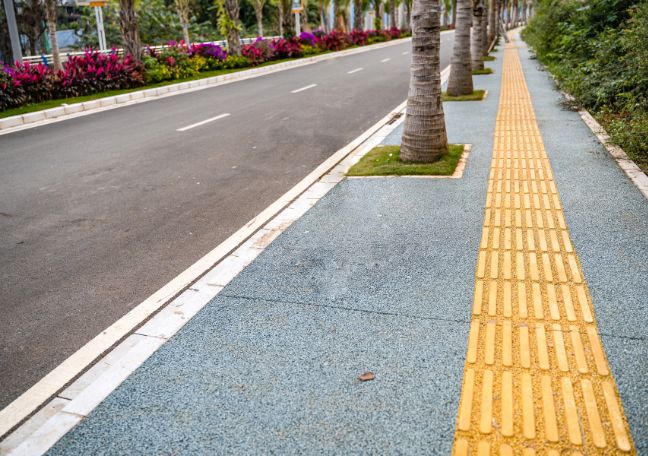
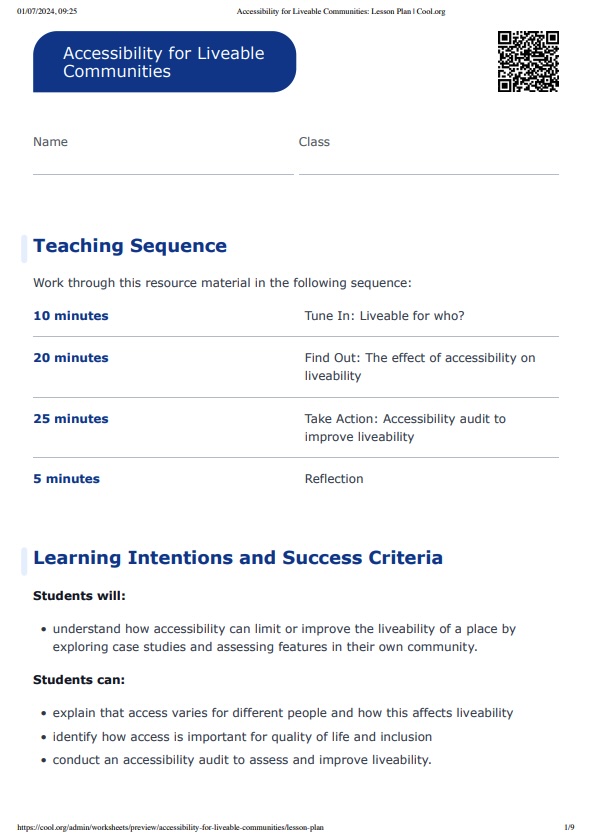
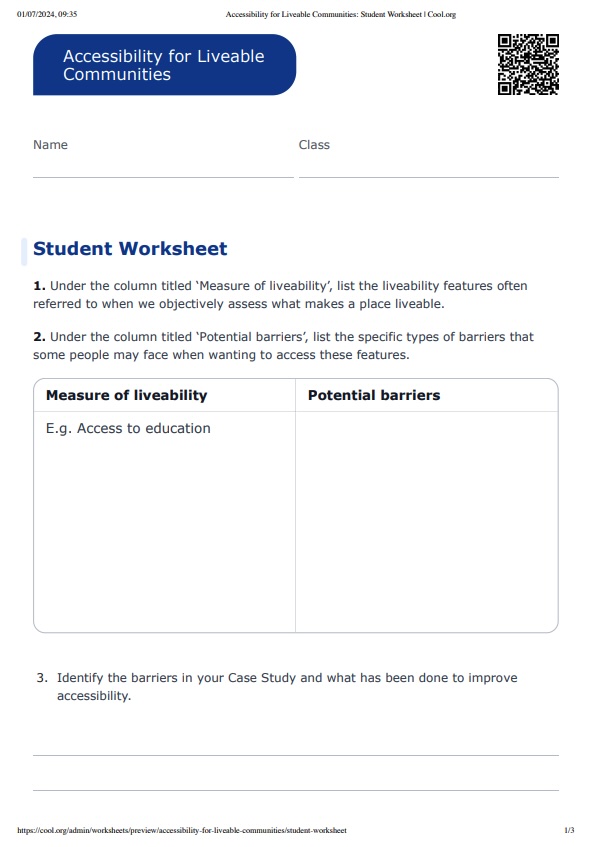
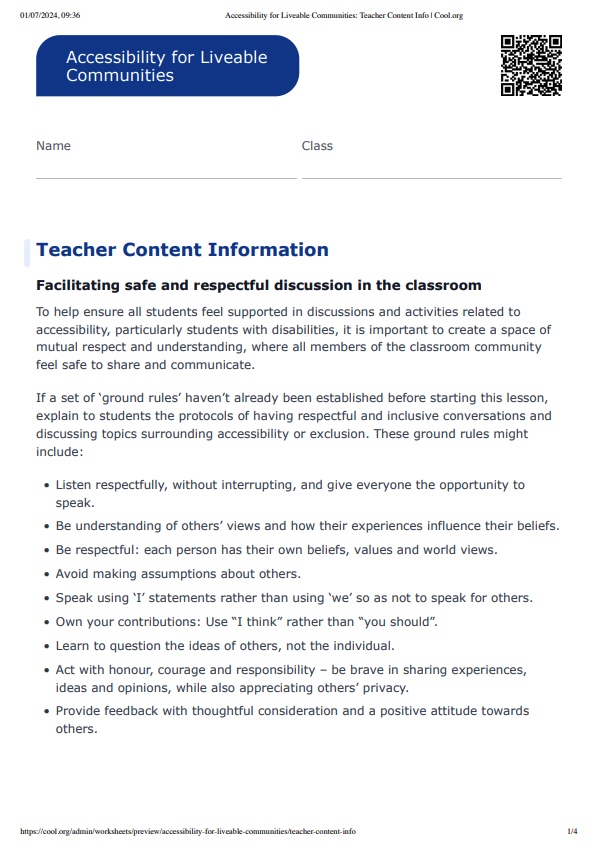
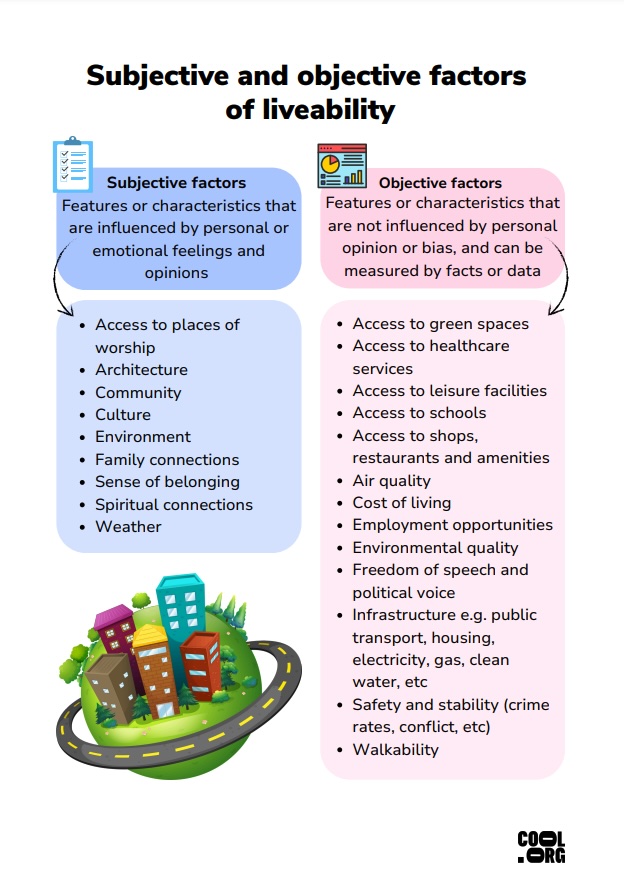
Welcome back!
Don't have an account yet?
Log in with:
Create your free Cool.org account.
Many of our resources are free, with an option to upgrade to Cool+ for premium content.
Already have an account?
Sign up with:
By signing up you accept Cool.org's Terms and Conditions(Opens in new tab) and Privacy Policy(Opens in new tab).